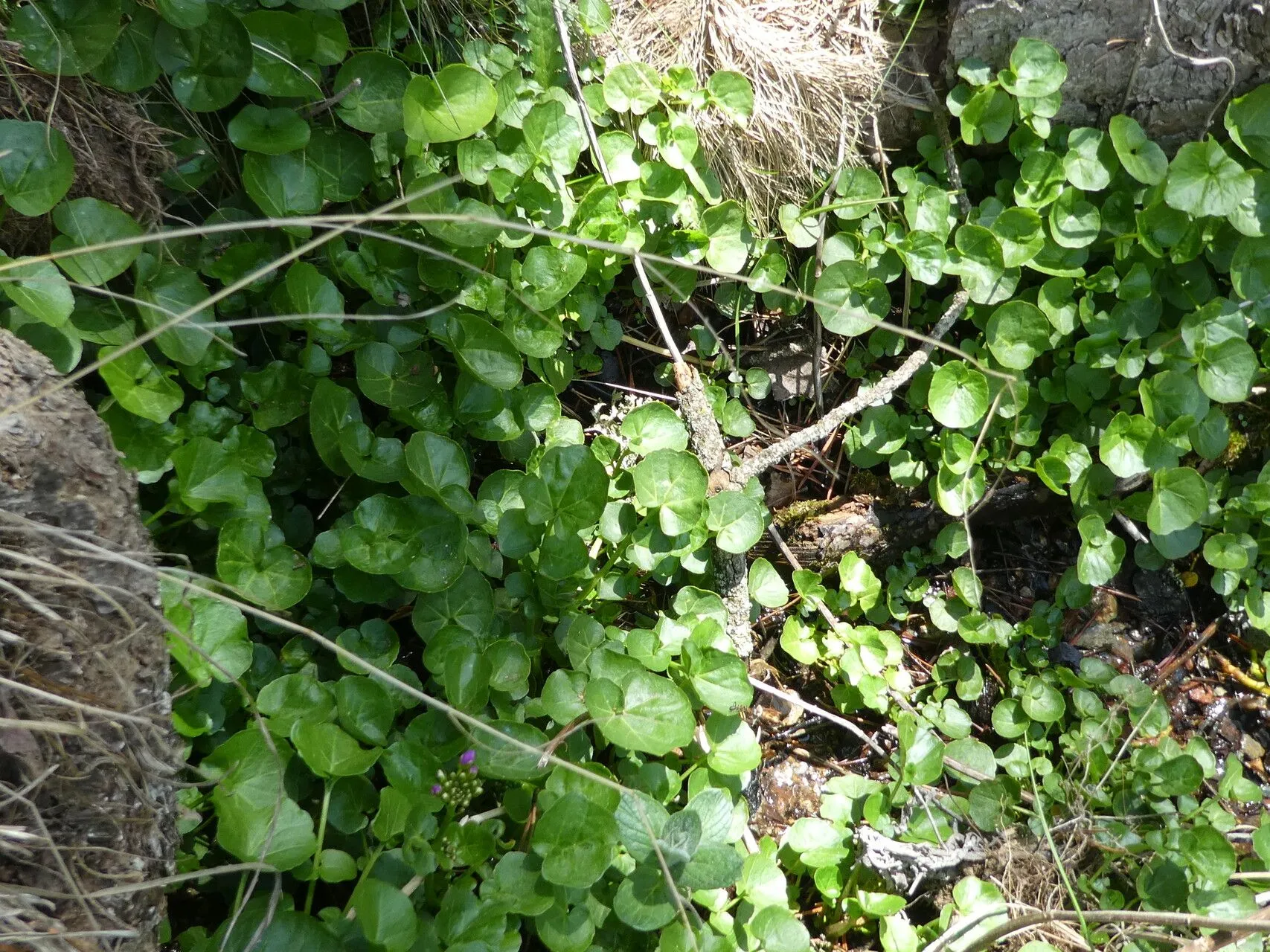
Author: Pourr.
Bibliography: Mém. Acad. Sci. Toulouse 3: 310 (1788)
Year: 1788
Status: accepted
Rank: species
Genus: Cardamine
Vegetable: False
Observations: S. France to N. Spain
The Greater Cuckooflower, scientifically known as Cardamine raphanifolia, is a remarkable species within the Brassicaceae family. First documented by Pourr. in the Mémoires de l’Académie des Sciences de Toulouse in 1788, this species has captured the interest of botanists and plant enthusiasts for centuries.
This perennial herb thrives in regions spanning from Southern France to Northern Spain, where it finds its ideal habitat. The Greater Cuckooflower is characterized by its lush, green foliage and delicate, lilac to white flowers that bloom in clusters during the spring. It often favors damp, shaded areas near streams or in moist meadows, thriving under conditions that provide ample water but avoid waterlogging.
Cardamine raphanifolia is easily recognizable by its pinnate leaves, which have a tendency to exhibit a slight purple tinge, particularly in colder weather. The flowering stems can grow quite tall, often reaching heights of up to 90 centimeters, making it a striking feature in the landscape where it occurs.
Ecologically, the Greater Cuckooflower plays a significant role in its environment. It is a valuable food source for a variety of insects, particularly for the Orange-tip butterfly (Anthocharis cardamines), whose larvae feed on the leaves and flowers. Additionally, the plant contributes to the overall biodiversity of the areas it inhabits, supporting a range of pollinators and other wildlife.
Cultivating Cardamine raphanifolia in gardens or naturalized areas can be rewarding for gardeners seeking to add a touch of natural elegance to damp, shaded spots. It is a low-maintenance plant that, once established, requires minimal care and reliably returns year after year, providing gentle colors and a light, airy texture to garden designs.
In summary, the Greater Cuckooflower is more than just a botanical curiosity; it is a resilient and graceful plant that enhances both natural and cultivated landscapes. Its historical significance, ecological contributions, and aesthetic value make it a noteworthy species deserving of attention and appreciation.
Eng: greater cuckooflower
Cym: blodyn llefrith mawr
En: Greater Cuckooflower, Radish-leaved Bittercress
Fr: Cardamine à feuilles de radis, Cardamine à larges feuilles, Cardamine à feuilles larges
It: Billeri di Calabria
Es: Hierba de los aguazales
Cy: Blodyn Llefrith Mawr
: Greater cuckooflower
© copyright of the Board of Trustees of the Royal Botanic Gardens, Kew.
© copyright of the Board of Trustees of the Royal Botanic Gardens, Kew.
© copyright of the Board of Trustees of the Royal Botanic Gardens, Kew.
Taken Jun 26, 2019 by Juanma Crespo (cc-by-sa)
Taken May 13, 2020 by François Mathieu (cc-by-sa)
Taken Apr 26, 2020 by Dominique Derly (cc-by-sa)
Taken Nov 22, 2019 by parramon marta (cc-by-sa)
Taken May 10, 2022 by Anna LL. (cc-by-sa)
Taken Jun 12, 2016 by Tela Botanica − Alain BIGOU (cc-by-sa)
Taken May 31, 2016 by Tela Botanica − Alain BIGOU (cc-by-sa)
Taken May 31, 2016 by Tela Botanica − Alain BIGOU (cc-by-sa)
Taken Jun 23, 2014 by Tela Botanica − Jean-Jacques HOUDRÉ (cc-by-sa)
Taken May 10, 2022 by Anna LL. (cc-by-sa)
Taken Jun 9, 2015 by Tela Botanica − Alain BIGOU (cc-by-sa)
Taken Jan 21, 2022 by Heiko Wagner (cc-by-sa)
Taken Jan 21, 2022 by Heiko Wagner (cc-by-sa)
Taken Jun 9, 2022 by Serra Toni (cc-by-sa)
Taken May 10, 2022 by Anna LL. (cc-by-sa)
Taken Jul 6, 2021 by margarida vila (cc-by-sa)
Taken May 1, 2022 by myriam pied (cc-by-sa)
Taken Jun 17, 2021 by Rossen Vassilev (cc-by-sa)
Taken Jun 12, 2010 by Tela Botanica − Catherine MAHYEUX (cc-by-sa)
Taken May 31, 2016 by Tela Botanica − Alain BIGOU (cc-by-sa)
Taken Jun 3, 2016 by Tela Botanica − Jean Paul SAINT MARC (cc-by-sa)
Taken Jun 3, 2016 by Tela Botanica − Jean Paul SAINT MARC (cc-by-sa)
Taken Jun 3, 2016 by Tela Botanica − Jean Paul SAINT MARC (cc-by-sa)
Taken May 9, 2022 by Anna LL. (cc-by-sa)
Taken Apr 15, 2007 by Photoflora – Benoit BOCK (©)
Taken Mar 25, 2022 by Sylvain Piry (cc-by-sa)
Taken Jan 1, 1970 by Photoflora – L’Abbé COSTE (©)
Taken Apr 15, 2007 by Photoflora – Benoit BOCK (©)
Taken Jun 2, 2022 by francois tissot (cc-by-sa)
Ph maximum: 5.5
Ph minimum: 5.0
Light: 7
Atmospheric humidity: 9
Bloom months: [‘may’, ‘jun’, ‘jul’]
Soil nutriments: 5
Family: Myrtaceae Author: (F.Muell.) K.D.Hill & L.A.S.Johnson Bibliography: Telopea 6: 402 (1995) Year: 1995 Status:…
Family: Rubiaceae Author: Pierre ex A.Froehner Bibliography: Notizbl. Bot. Gart. Berlin-Dahlem 1: 237 (1897) Year:…
Family: Sapindaceae Author: Koidz. Bibliography: J. Coll. Sci. Imp. Univ. Tokyo 32(1): 38 (1911) Year:…
Family: Asteraceae Author: A.Gray Bibliography: Pacif. Railr. Rep.: 107 (1857) Year: 1857 Status: accepted Rank:…
Family: Fabaceae Author: Medik. Bibliography: Vorles. Churpfälz. Phys.-Ökon. Ges. 2: 398 (1787) Year: 1787 Status:…
Family: Aspleniaceae Author: (Cav.) Alston Bibliography: Bull. Misc. Inform. Kew 1932: 309 (1932) Year: 1932…